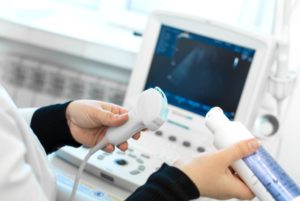
Cleaning and low-level disinfection (LLD) effective against bloodborne pathogens are safe and sufficient procedures for disinfecting ultrasound transducers used in percutaneous procedures—this is according to an intersocietal position statement recently issued by the American Institute of Ultrasound in Medicine (AIUM).
Appearing in the peer-reviewed Journal of Ultrasound Medicine, the statement was issued in an effort to clear up confusion over disinfection practices and ensure that ultrasound equipment remains both safe and available.
Originally published in February 2021, the statement was recently republished with the support of 20 healthcare organisations, together representing more than 790,000 physicians, nurses, infection control professionals, and other healthcare professionals.
Glynis Harvey, CEO of the AIUM, said: “Our hope is that having the support of so many organisations will encourage the widespread adoption of appropriate disinfection practices in clinical and professional settings, bringing significant benefits to patients.”
The position statement was developed to address a growing debate over disinfection practices among practitioners in a wide range of medical specialties, explains Oliver Kripfgans, a medical ultrasound physicist and research associate professor at the University of Michigan (Ann Arbor, USA) who spearheaded development of the statement.
In many advanced medical procedures, ultrasound is used for guiding needles, catheters, and other devices that are inserted through the skin. Such percutaneous procedures include vascular access, arthrocentesis, paracentesis, pericardiocentesis, thoracentesis, lumbar puncture, and the delivery of regional anaesthesia.
The current debate stems from confusion over how ultrasound transducers should be disinfected between such procedures. Some practitioners have supported the use of high-level disinfection (HLD) techniques, which typically involve placing transducers in an apparatus that exposes them to specialised disinfecting chemicals such as glutaraldehyde or a mist of hydrogen peroxide.
Meanwhile, others have maintained that adequate protection is provided by use of a disposable transducer cover followed by cleaning and LLD, which involves wiping the equipment thoroughly with standard disinfectants.
In order to clarify these issues, the AIUM organised an intersocietal taskforce to examine the evidence available in published studies. The taskforce concluded that ultrasound-guided percutaneous procedures can be safely performed in conjunction with cleaning and LLD techniques, noting that transducer covers or other approved mechanical barriers protect the sterility of the procedure. Moreover, evidence showed that rare cases of infection are typically linked to the use of nonsterile or contaminated coupling gels, failure to use a transducer cover, or improper cleaning—but not to the use of LLD techniques.
The taskforce also found that recommendations for HLD are “not evidence-based and will result in unwarranted and unnecessary use of resources”.
Kripfgans said: “There was great concern that we were actually harming patients by requiring high-level disinfection.
With the support of the 20 signatory organisations, the AIUM is now launching an educational campaign to publicise the position statement and encourage the adoption of LLD techniques “to ensure that this invaluable tool remains available to every patient who can benefit from it,” says Harvey.
The full statement and a complete list of signatories can be found here.












